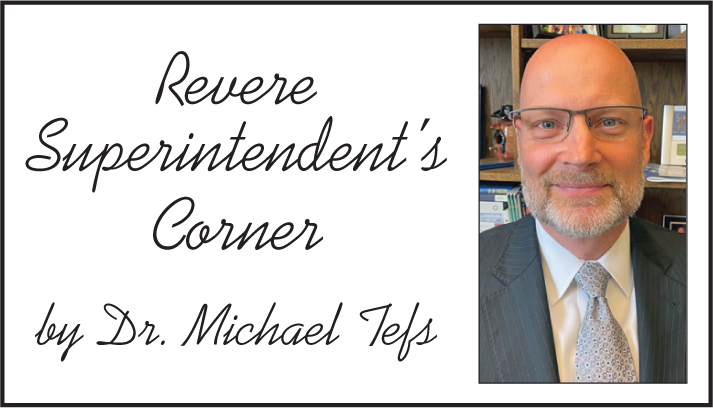Revere Superintendent’s Corner
The Science of Reading
On Jan. 31, Gov. Mike DeWine referenced “the Science of Reading” in his State of the State Address: “I am calling for a renewed focus on literacy, and on the way we teach reading in the State of Ohio.
“There is a great deal of research about how we learn to read. And today, we understand the great value and importance of phonics. Not all literacy curriculums are created equal, and sadly, many Ohio students do not have access to the most effective reading curriculum.
“In our budget, we are making sure that all Ohio children have access to curriculum that is aligned with the evidence-based approaches of the Science of Reading,” said Gov. DeWine
Revere was excited to hear this announcement as the Science of Reading serves as our literacy foundation. So, what exactly is the Science of Reading?
Educators have access to neurological science that allows researchers to study what is occuring in the brain of struggling and proficient readers. This also means that researchers can study the impact of different instructional strategies more granularly and make recommendations for improved student learning.
The instructional strategies that Revere deploys in grades K-2 through LETRS training is focused on Structured Literacy, also known as, “The Science of Reading.”
We have learned that growth in reading comprehension starts with developing students’ word recognition and language comprehension skills.
Our students need to be able to:
• know the sounds that letters make
• the way to spell different sounds that make up words and
• how to use these word parts to decode whole words.
Revere teachers are using evidence-based explicit instruction strategies along with high quality instructional materials to build phonemic awareness and phonics skills in our students.
Examples of this instruction include using sound walls and individual handheld mirrors in primary grade classrooms for children to see the shape the mouth makes and where their lips, tongue, and teeth are during each sound pronunciation. We also have shifted to providing students with reading practice through individual books called “decodables.” These use the same phonics patterns students are working on so that they are reading words based on their word knowledge and not using memorization, pictures, or guessing to read books in their early grades. Additionally, we are building more opportunities for literacy instruction to be hands-on and multi-sensory.
Along with developing word recognition, we are continually giving all students exposure to rich text through read-alouds and whole class learning including books that increase opportunities for students to learn new vocabulary and to stretch their knowledge.
The Science of Reading strategies included in literacy instruction are absolutely essential for some, and scientifically beneficial for all.
As superintendent of schools, I am super proud of our teachers and curriculum coaches for this approach. The culture of literacy in our schools is truly impressive.
Revere Pride. Living It Everyday! ∞
∞

